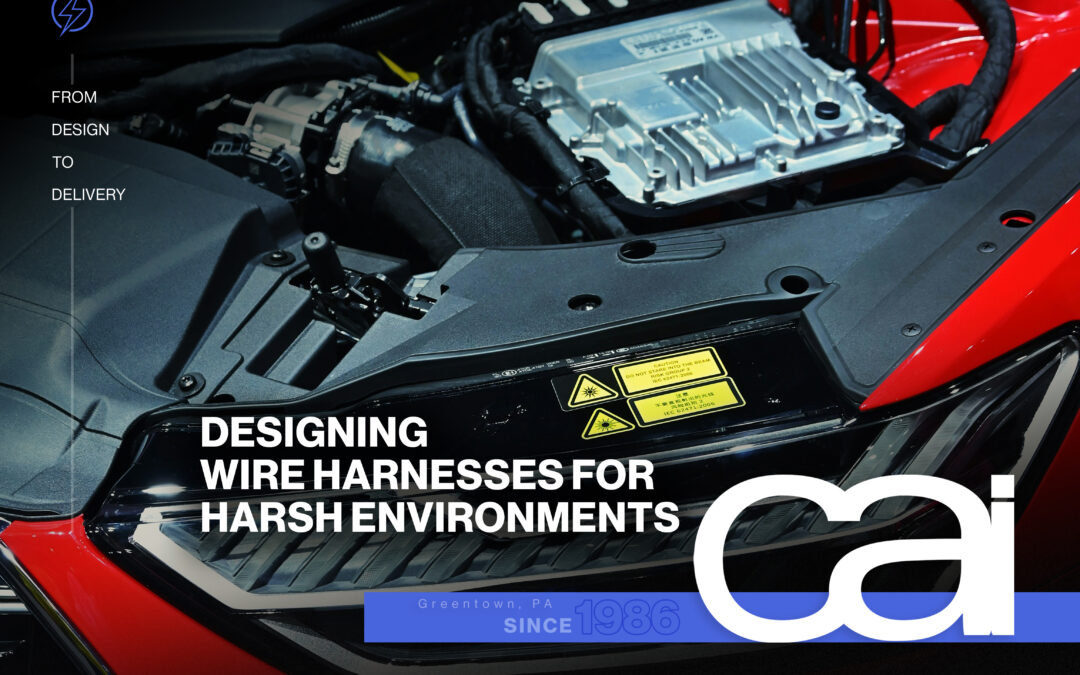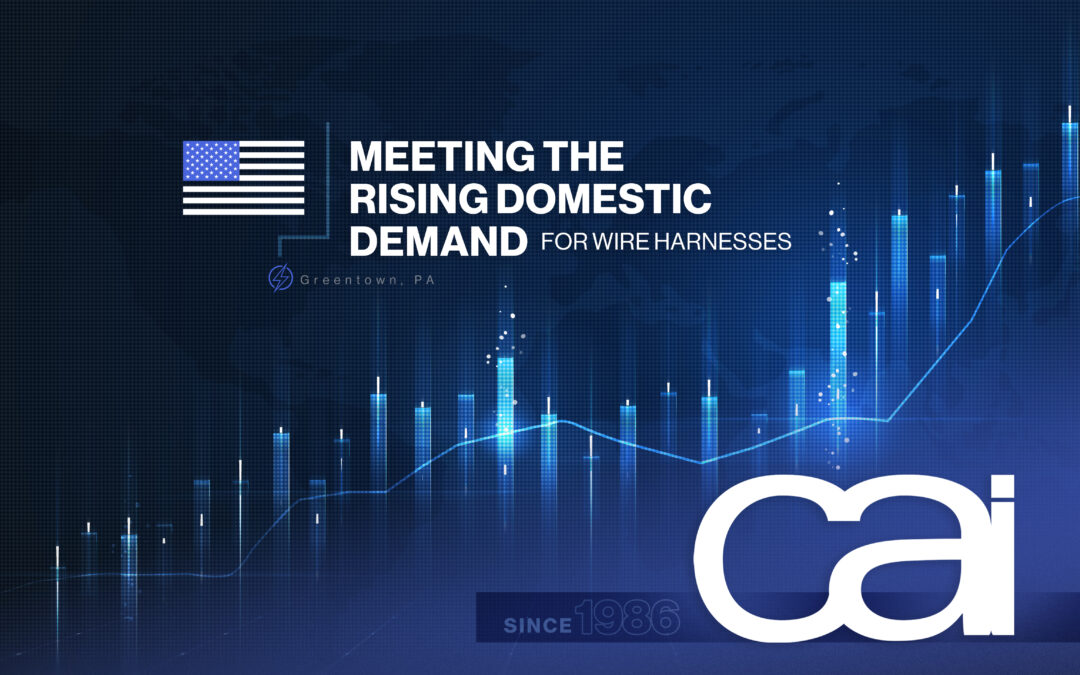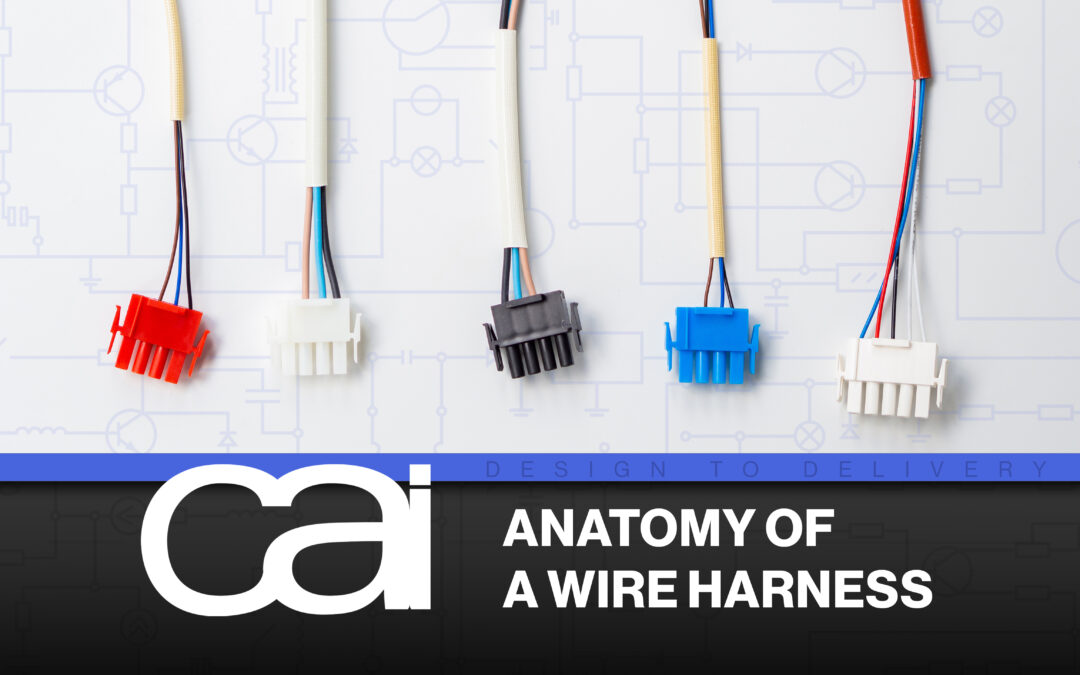Exploring the Different Types of Electrical Insulation Materials
Greatly affecting the lifespan and effectiveness of wires and cables, insulation is non-conductive material used to cover and protect the conductors so they can keep the flow of data and power moving smoothly. Insulation guards against electrical leakage when the wire’s current might come into contact with other nearby wires and cables. It also helps protect against electrical shock and external threats such as water and extreme temperatures that can lead to corrosion, shorts and electrical failure.
Wire insulation and cable insulation are basically the same. Wire insulation refers to protection over conductors while cable insulation refers to the insulation surrounding the wire inside it or the insulation of the overall cable.
When building a wire, cable, wire harness or cable assembly, there are several different types of insulation materials to pick and choose from, each with its own unique attributes. This makes it easier for the experienced manufacturers at CAIto find just the right insulation to customize and optimize wires and cables for their intended use and future environment.
The three main electrical insulation material categories are plastic, rubber, and fluoropolymer, and within them are a wide array of options offering varying benefits.
For expert advice on the best insulation for your wire and cable applications, get in touch with CAI today. From design to delivery, CAI can handle all your custom wire harness and cable needs.
Plastic Insulation
Plastics feature a number of key attributes ideally suited for wire and cable insulation including reliable flexibility and endurance, as well as electrical, UV and fire resistance.
Polyvinyl Chloride (PVC)
Used in a wide variety of industries due to its affordability and high durability, PVC offers high resistance to flame, moisture, abrasion and chemicals, and can maintain its shape and durability at temperatures from -55° to 105°C. Non-toxic, tasteless and odorless, PVC is a popular insulation in medical, food, commercial and household wiring.
Polyethylene (PE)
Also an inexpensive and versatile choice, PE is denser and harder than PVC, highly electrically insulative and especially resistant to cracking at temperatures between -65° and 80°C. Mostly used in coaxial and low-capacitance cables, PE is a popular choice for cables designed for high-speed transmission.
Polypropylene (PP)
Similar to PE but with higher heat resistance, a harder outer shell, and less flexibility, PP has a wider temperature range of -30° to +105°C. It is used primarily for thin-wall primary insulations and can be foamed to improve its electrical properties.
Polyurethane (PUR)
PUR is used for jackets more than insulation because of its poor electrical and flammable properties. However, it is extremely flexible, durable and resistant to environmental threats even at low temperatures, which works well with retractile cords and salt-spray/low-temp military applications.
Nylon
Nylon is a strong, stiff, yet extremely flexible plastic with outstanding cut-through, chemical and abrasion resistance, especially in thin-wall applications. Due to its poor water resistance and consequently its inferior electrical qualities, it is mostly used as a secondary insulator over softer materials.
Semi-Rigid PVC (SR-PVC)
Mainly used for primary insulation, SR-PVC is highly resistant to abrasion, heat, water, acid, and alkali while also being flame-retardant.
Plenum Polyvinyl Chloride (Plenum PVC)
For PVC to be plenum-rated, the insulation must meet stringent fire safety regulations for use in plenum spaces — building spaces providing pathways for either heated/conditioned or return airflows, typically at greater than atmospheric pressure.
Chlorosulfonated Polyethylene (CSPE)
Exhibiting excellent heat, oil, ozone, UV and weather resistance, CSPE functions well in a wide temperature range (-20° to +125°C). Chlorinated Polyethylene (CPE) is a less expensive, environmentally friendly alternative to CSPE, and is commonly found in power and control cables, especially in industrial applications.
Fiberglass
Fiberglass is a common type of fiber-reinforced plastic using glass fiber. Resistant to moisture and chemicals, fiberglass can be used in temperatures up to +482°C making it the preferred choice for extremely demanding environments and applications including heat treating, kilns, foundries, and aluminum processing.
Rubber Insulation
More flexible than plastic especially at lower temperatures, rubber is another popular option for wire and cable insulation.
Thermoplastic Rubber (TPR)
Also referred to as Thermoplastic Elastomer or TPE, TPR is a combination of rubber and other plasticizers which produces better colorability, higher processing speeds, and broader temperature range use than true thermoset rubber. Offering effective heat, UV, weather and age resistance, versatile TPR is a smart choice for demanding environments.
Silicone
Extremely flexible, heat-resistant and flame-retardant, silicone can be used effectively in high temperatures reaching 150° to 250°C, depending on the grade. It is moderately abrasion-resistant and extremely flexible. The benefits of this general-purpose wiring insulation material include long storage life and good bonding properties.
Ethylene Propylene Rubber (EPR)
Due to its excellent thermal and electrical properties, EPR is commonly used in high-voltage cables and allows for a smaller cross-sectional area for the same load-carrying capacity of other cables. While it’s resistant to heat, oxidation, water, acid, alcohol and alkali, it is not cut-resistant and its relative softness may require more care when installing.
Neoprene (Polychloroprene)
Delivering superior abrasion, cut, and chemical resistance, neoprene provides long service life over a wide temperature range. Remarkably flame retardant, it’s preferred insulation for harsher applications such as military, mining, power and oil.
Styrene-Butadiene (SBR)
Abrasion-resistant SBR has qualities similar to neoprene but offers greater temperature resistance and is typically used for MIL cables at temperatures from -55° to 85°C.
Natural Rubber
Rubber insulation generally consists of both natural rubber and SBR compounds, and comes in a variety of formulas for a wide array of applications. While temperature ranges and other characteristics vary according to each formula, this insulation has poor oil and ozone resistance but offers good low-temperature flexibility, electrical properties, and resistance to water, alcohol and abrasion.
Fluoropolymer Insulation
A fluoropolymer is a fluorocarbon-based polymer with multiple carbon–fluorine bonds that help produce insulation that’s highly resistant to acids, bases and solvents.
Perfluoroalkoxy (PFA)
Due to its low dissipation factor, PFA is a pricier but excellent option for enhanced electrical efficiency. Able to withstand temperatures from -65° to 250°C, PFA is flexible and offers fire, chemical and UV resistance.It is commonly used in thermocouple wire but is also highly effective in military, aerospace, oil and similarly demanding applications.
Polytetrafluoroethylene (PTFE)
Offering great flexibility, as well as water, oil, chemical, and heat resistance, PTFE is a thermoplastic material that has a temperature range of -73° to +204° C. While its mechanical properties aren’t as high as other fluoropolymer materials, PTFE is a very reliable insulator that performs consistently for many applications.
Fluorinated Ethylene Propylene (FEP)
Preferred for its processing characteristics and wide range of application possibilities, FEP features excellent electrical properties and a wide temperature range from -80° to 200°C. Commonly used in plenum cable and military applications, it’s tough, flexible, highly flame-retardant and chemical-resistant.
Ethylene Tetrafluoroethylene (ETFE)
ETFE is a plastic created from fluorine that offers high strength, a broad temperature range, and excellent resistance to corrosion, chemicals, electrical current, and radiation. Lightweight and recyclable, it improves data transmission while reducing the overall weight of the wire. Meanwhile, Halar ethylene chlorotrifluoroethylene (ECTFE) delivers excellent strength, chemical resistance, and flexibility. While ETFE and ECTFE are stronger and more flexible than PFA or FEP, they lack some of the electrical benefits.
Thermoplastic Elastomers (TPE)
Combining the benefits of plastic and rubber, TPE is highly versatile — able to be molded, extruded, and reused like plastic while maintaining the flexibility and stretch of rubber. However, with a temperature range of only -50° to 105°C, TPE offers poor heat and chemical heat resistance and low thermal stability. It can also be pricier than many other types of insulation.
Polyvinylidene Fluoride (PVDF)
Flexible, lightweight, and thermally stable, PVDF — trademarked under the name Kynar — is an economical insulation that’s chemical, heat, weather, abrasion, and fire resistant. Used in a wide range of industries, it is often used in cables required to meet the UL standard 910 plenum cable flame test.
Choosing the right insulation is essential to ensuring that your finished product performs its best. With a vast array of available options, it takes expert insight to know which insulation is right for your application. Before beginning your next electrical project, talk to the team at CAI for help guiding the way.





